#subterrenean
Photo

How Ironic, that I only came to understand the worlds beauty as I went to leave it behind.
ELSE I is such a good track ngl. it playing in the depths made it such an incredible experience
#rain#world#rainworld#rain world#art#fanart#digitalart#rw ancient#else#ELSE I#ostober#the depths#subterrenean#echo#rw echo#bagels stuff
22 notes
·
View notes
Text
Anyone going 2 subterrenean dissonance in philly .. i wil b there ^_^
4 notes
·
View notes
Text

Diagram of Ahartha or Hollow Earth. Even if the earth is not completely hollow like in this classic pictorial, there is no doubt that extensive caverns and subterrenean bases exist.
🌎🌎🌎👽👽👽
#anime#ufos#aliens#scifi#extraterrestrials#animation#ancient aliens#comic books#fantasy#manga#agartha#inner earth#hollow earth
58 notes
·
View notes
Text
Species Profile//: Lhet'gii
(Elf equivalent)
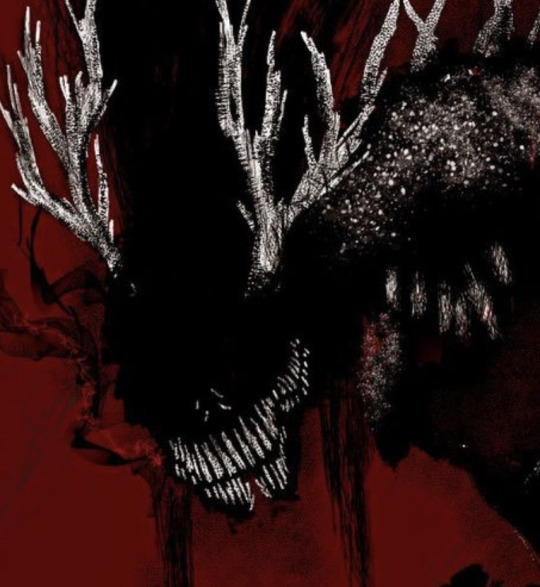


(Note that appearances are not set in stone. I'm not telling you how to bake your cake. If you want your elf to have seventeen mouths, or 6 hands, be my guest. All characters are individuals, not just a combination of labels and groups.)
(Pictured here are all female elves.)
Elf Equivalent//:
Tall, long-limbed humanoid insectoids who tread on hooves. They bear horns, and several curved bone-spurs all across their body, positions and size varying from individiuals. They have an above-average minds-eye, and have heightened senses when compared to other species.
Physical Prowess//:
Vitality: 18 Hit points; 9 Wounds.
Endurance: 7 AP, with a +3 upkeep.
Mental Fortitude: 10, with an upkeep of 2.
Agility: 18(23) Paces
Native Characteristic: Gain one AP when inflicting agony onto an opponent. Maximum two per turn.
Society Structure and Psychology:
Species have an innate "empath" trait that allows them to be more aware of their surroundings, especially another's pain. They can also sway other's feelings, if only slightly by using minor pheromones. Most elves, as individuals, are very polarizing. They're commonly seen as enigmatic savants, thanks to many famous elven songstresses, scholars and sorcerers. When meeting one, they're seen as almost ghastly in appearance, and/or uncanny. Most see their movements as offputting, but can't quite put their tongue to mind when describing it, their limbs bend too far, they walk too gracefully, they are... offputting, to put it lightly.
General Appearance//:
One of the taller members of the common sapients, they stand on average at around 7-8 feet tall. (210-250cm). They have many insectoid-esque features, like small ridges on the outerfacing parts of their forearms, split jaws, and long, heavy antennae falling from above their teeth, flowing like a dragon's whiskers. In place of their eyes, they will have hundreds of smaller holes all over the crest of their face, serving as primitive eyes, similar in appearance to the spiders we have. They lack both soft skin and lips, with their epedermis being closer to a brittle exoskeleton. Little to no sexual dimorphism, other than females having smaller horns.
Variants//:
Subterrenean: Stone to obsidian in coloration, with no reflective properties whatsoever. They have longer horns, and sharper claws.
Common: Pale, parchement colored insectoids. Longer fangs, and more keen with their empath trait.
Personal interjection//:
I honestly used to hate elves when I first started reading. They were arrogant, snotty, and too pretty. After changing their characteristics, these things are honestly one of my favorite species now! Well, mainly because I just neutered the things that made them agitating, and turned them into irredeemable monsters...
3 notes
·
View notes
Text
Honestly?If a mysterious,masked musical genius,architect,composer with great fashion sense took interest in me and wanted me to stay in his subterrenean lake house under the Paris Opera I definitely would.Rip to Christine Daae but I'm different.
183 notes
·
View notes
Text
Western Dragon vs Eastern Dragon
This post technically doesn’t have anything to do with SnK, but since the generations of beast titans are associated with Chinese zodiac animals (and dragon is one of them), and since dragon is the zodiac animal assigned to Erwin in SnK merch (I think?), I thought I’d briefly and superficially explain the differences between dragon in Western culture and dragon in Eastern culture.
The most obvious difference is that the Western dragon breaths fire while the Eastern dragon brings water and rainfall. But let’s look at some other differences:
Western dragon
When I think about the Western dragon, words that come to mind are: antagonism, passion, destruction, chaos, anarchy. The fire-breathing dragon in European myths is a formidable and menacing force that exists outside the established hierarchy; it’s a violent and unbridled power that humanity needs to wrestle with and hold in check. Think about the greed of the dragon Smaug in The Hobbit. Smaug lies on its hoarded gold under the mountain and slumbers as if the outside world doesn’t exist, and once awakened, Smaug engulfs an entire town in flames. Think about the dragon in the Old English saga Beowulf that Beowulf is fated to fight against and mortally wounded by. Here the dragon is a symbol of evil that needs to be vanquished to ensure the peace and survival of human society.
Eastern dragon
The Eastern dragon, far from being chaotic and anarchic, belongs to the pinnacle of established hierarchy. The Eastern dragon is regal and auspicious, and a direct symbol of the emperor and the empire. Unlike the Western dragon that threatens humanity from the periphery, the Eastern dragon lies at the heart of political power; and unlike the Western dragons that often prowl in subterrenean spaces, the Eastern dragon have their abode in the heavens. In Chinese myths, dragons are kings and governors over the human realm, and they loathe it when rebels rise to challenge their ordinances and their rule. Dragons are in charge of rainfall, and rainfall is vital to agricultural productions; this means that the dragon kings have direct control over the livelihood of human communities. In Chinese myths, farmers as well as noblemen build temples for the dragon kings, pray to them for good harvests, and offer them tributes to appease them. At its best, the dragon is benign, sagacious, and life-giving; and at its worst, the dragon is cruel, bureaucratic, and despotic, as rulers can be.
#shingeki no kyojin#beast titan#Erwin Smith#but not really snk#western dragons#Chinese myths#eastern dragons#smaug#beowulf#chinese fandom stuff
15 notes
·
View notes
Photo


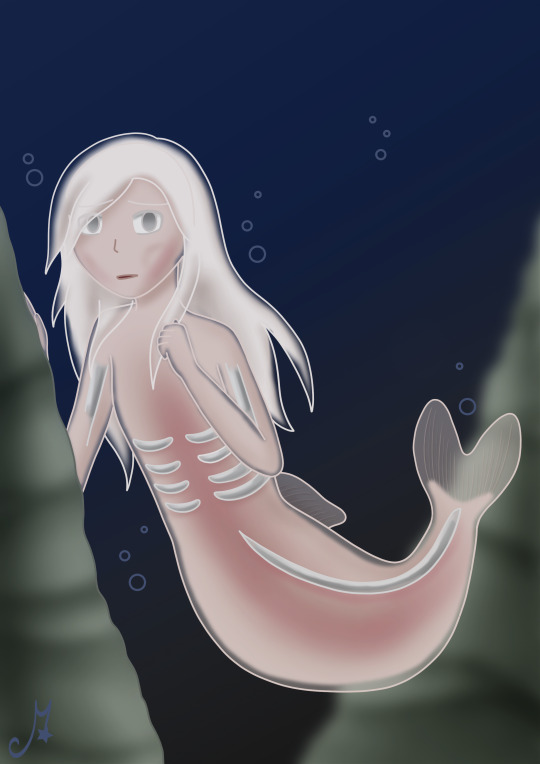
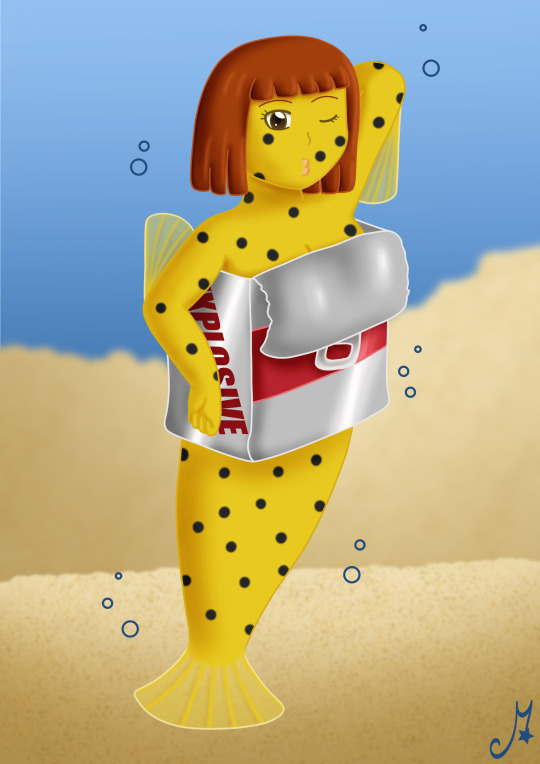


Mermay Day 7-12: Royal Dottyback, Fire Shrimp, Subterrenean Fish, Boxfisch, Flying Fish, Vampire Squid
Prompt list
#my art#mermay#mermay 2021#mermaid#sea creatures#idk how i came up with the fire shrimp and boxfish one#but i think they are a nice mix of funny and silly XD
2 notes
·
View notes
Text

June 19, 2021
New Research on the Mississippian Civilization
Recent archaeological research on the emergence of the Mississippian civilization posits that it was a combination of local styles and ideas mixed with the enormous influence of the capital of the Mississippian world, Cahokia. The diaspora of Cahokian people over time brought with it ceramics of their region, and their religious ideology based on the ordering of the cosmos.
Early on, around 1050 CE, they traveled north to present day Wisconsin spurring the creation of Cahokia style platform mounds at the sites of Trempeleau and Aztalan, as well as site layout and pottery. At the Carson site, downriver from Cahokia, Cahokian migrants built long, rectangular and semi-subterrenean houses that looked like home.
Cahokian emissaries carried distinctive tools, like the Burlington chert drill, far to the south, for making their tri-lobed projectile points.
Long-nosed god maskettes made of copper are found at 20 or so sites across the Southeast and Midwest, all of which have a Cahokian presence. These masks may have been part of a hero narrative that was also depicted in rock art and narrated by Siouxan speaking groups whose traditional lands encompassed much of the Upper Midwest.
Farther north, Cahokians created other new, hybridized styles with local populations.
At the Halliday site, in southern Illinois, 30 kilometers southeast of Cahokia; excavations have found nonlocal pottery types from Indiana and northern Mississippi, Tennessee and Arkansas, alongside pottery typical of Cahokia. People at Halliday were also eating slightly different foods than at other nearby sites, suggesting they maintained culinary traditions of their remote homelands.
Upland villages adopted a Cahokian building method that placed a prefabricated wall directly into a trench, but maintained their own building styles as well.
Cahokian and Mississippian culture are not one monolithic entity with just one perspective, but instead, a multitude of voices that together signified something greater.
The Conversation has the report here:
https://theconversation.com/cahokian-culture-spread-across-eastern-north-america-1-000-years-ago-in-an-early-example-of-diaspora-130106
1 note
·
View note
Photo

Subterrenean rose 🌹
A beautiful flower blossoming beneath, never to be seen or appreciated
20 notes
·
View notes
Text
So one of the fun things with Dwarf Fortress (and one of the !fun! things) is that it is easily moddable, and that there are dozens of mods as easily available. Earlier today I was playing with Teh LOLmod installed. I think you can imagine what kind of mod that is, but I can give you some examples of my experience either way. First, my dwarves (or forumites, as they are called within Teh LOLmod) arrived at the site where I would set up my fort. They came with a tank and a pair of courage wolves, that I war trained and chained to guard the entrance. Later, as my fort grew, my booze production couldn’t keep up, and so I ordered my miners to dig down to the caverns to find some subterrenean lakes. After the death of a few due to dehydration, they finally did, but then a wild cave-dwelling car rammed into those trying to get the water, killed a few, and then wreaked havoc in my fort until some wisiting monster-slayers finally put it down. That is my story.
All mods described can be found on the Bay12 forums (just google it), and Dwarf Fortress is a free game that too can be found online. I recommend it.
32 notes
·
View notes
Photo

VIRTUAL VISITA IGLESIA 2022 - Day 6 Underground Cemetery, Nagcarlan, Laguna The underground cemetery in Nagcarlan has architectural and historical significance. It was declared a National Historical Landmark for its ties to the revolution and the subterrenean feature makes it a unique #camposanto. The complex has an octagonal field bordered by decorated walls housing the niches. The camposanto is on one side directly across the main axis from the entrance. The facade is #Baroque with a central espadana which the gracefully morphs into scrolls at either sides. It houses the santo entierro and was used for funeral masses before interring the dead. Seven Churches in Seven Days, seven of the nicest #church #facades ive been to in the country, one per day of #semanasanta till #easter. A third serving of #virtual #visitaiglesia in the time of #lockdown. Start your own virtual visita iglesia and post one church day till Easter as well. Flood the feed with beautiful churches while we maintain being the living Church in this holiest of times. #wanderful #wanderfromhome #lockdowndiaries #heritageph #lumangsimbahan #instakultura #pamana #heritagechurches #holyweek #holyweek2022 #dioceseofsanpablo #santoentierro #laguna #nagcarlanundergroundcemetery #nagcarlan #nagcarlanlaguna #500yoc (at Nagcarlan Underground Cemetery) https://www.instagram.com/p/CcW66u_vi_A/?igshid=NGJjMDIxMWI=
#camposanto#baroque#church#facades#semanasanta#easter#virtual#visitaiglesia#lockdown#wanderful#wanderfromhome#lockdowndiaries#heritageph#lumangsimbahan#instakultura#pamana#heritagechurches#holyweek#holyweek2022#dioceseofsanpablo#santoentierro#laguna#nagcarlanundergroundcemetery#nagcarlan#nagcarlanlaguna#500yoc
1 note
·
View note
Text
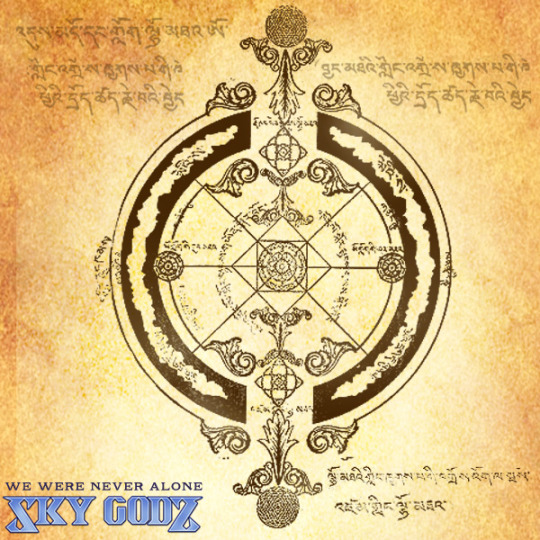
Diagram Design of Ahartha or Hollow Earth. Even if the earth is not completely hollow like in this classic pictorial, there is no doubt that extensive caverns and subterrenean bases exist.
🌎🌎🌎👽👽👽
#anime#ufos#aliens#scifi#extraterrestrials#animation#ancient aliens#comic books#fantasy#manga#hollow earth#agartha#inner earth
4 notes
·
View notes
Text
NOTES IN 2020
In the manner of notes on productivity;
Confectionary, but not sweet. Like salt water taffy.
Sterilize and multiply.
Make into a sad, knowing welcome to a subterrenean that no one is to ever leave.
Alright, let's get this over with.
Your lights are Halloween. They need to be Christmas.
Switch from revel and leisure to seismic existential tearing in a quick heartpace. [see: 'jar']
Sex, kink. Depravity.
It's the thing. Again. The shadow with the red eyes in the window, again.
Stoned. Cool but not cool.
A silent internal gasp made thunderclap.
It't the thing you hide behind your bed, in the room glowing with toasted buttercream lampshade. It is 11.01 PM.
I think this is the closest one can come to having a conversation with an actual ghost.
Another's company as silent, burgeoning communion. I think fist bumps.
Have I been here before?
Make it the way your face changes shape in the flash of a colored strobe.
Gotta get up. Gotta get out. Gotta get home before the morning come....
The smell of novelty shop incense with some kind of kush on the packaging. The taste of ice cold 7-Up at the train station. The sound of a supersize Custard Pie. The taste of mellifluous salted tomato. Corn starch to the touch. The sound of trying to sell my Dad on Danger Doom,
in the truck.
A Wilhelm fart.
Baby, you can be my Taxman.
Suffering for fun(?), Not art(?).
I don't want to to feel this slow and aware. Nobody should ever feel this slow and aware.
I don't want to feel this alive and
3.01 AM. The stillness makes the outside stale. The streetlights. You don't see them them, just the shadows. The banging.
The Great Bird With The Crystal Plumage Gig In The Sky.
Everything is sublime as a child. Even terror.
- Daniel Patrick Soch, 2020
0 notes
Text
Cahokian culture spread across eastern North America 1,000 years ago in an early example of diaspora
Cahokia's mound-building tradition flourished a millennium in the past close to modern-day St. Louis. JByard/iStock by way of Getty Pictures Plus
An expansive metropolis flourished virtually a thousand years in the past within the bottomlands of the Mississippi River throughout the water from the place St. Louis, Missouri stands in the present day. It was one of many biggest pre-Columbian cities constructed north of the Aztec metropolis of Tenochititlan, at present-day Mexico Metropolis.
The individuals who lived on this now largely forgotten metropolis had been a part of a monument-building, corn-farming tradition. Nobody is aware of what its inhabitants named this place, however in the present day archaeologists name town Cahokia.
Excavations present it was house to hundreds of households. The town held a whole bunch of earthen mounds that supported council homes, houses for social elites, tombs for highly effective leaders and reminders of lunar alignments. As well as, archaeologists have found a Woodhenge at Cahokia – a round celestial observatory made of enormous picket posts.

Typical Cahokian projectiles excavated on the Mill Cove Advanced in Florida.
Keith Ashley, CC BY-ND
Archaeologists name the pre-Columbian societies that lived within the Mississippi River Valley area “Mississippian cultures.” These folks stretched as far west as Oklahoma, north to Wisconsin, south to Mississippi and Louisiana, and east to Florida and North Carolina. Although broadly related, it’s unlikely these folks considered themselves as a unified political physique.
A posh query in American archaeology hinges on how these cultures arose and the methods wherein they shared concepts, items and other people.
Did the Cahokians create Mississippian tradition as they moved outward from their homeland, bringing their artifacts and concepts with them? Or did Cahokians unfold throughout the Midwest and Southeast, assembly new communities and sharing concepts alongside the best way, ultimately serving to type Mississippian tradition by way of a type of melting-pot course of? Lately, my colleagues Sarah Baires, Melissa Baltus and Elizabeth Watts Malouchos and I’ve contributed to new analysis investigating what it meant to be a Cahokian and Mississippian.

Archaeology college students excavate Cahokian and Mississippian websites to be taught extra in regards to the tradition they left behind.
Jayur Mehta, CC BY-ND
Placing out from Cahokia
Like cities in the present day, Cahokia was a various place inhabited by teams of individuals with completely different histories, diverging values and ranging concepts. So when folks left town, they seemingly had quite a lot of causes.
Early in Cahokia’s historical past, actions into and out of town could have been tied to non secular gatherings whereas later migrations out of town could have been associated to political change. Whereas there may be some proof for battle and potential for drought within the area, archaeologists don’t have any conclusive proof that these had been the final word causes for folks leaving town. In any case, some folks continued to dwell there.
No matter their motives, as Cahokian residents unfold out from St. Louis and migrated all through the woodlands east of the Mississippi River, they carried their tradition with them. Generally these had been distinctive artifacts, like specific ceramics typical of their area. However in addition they introduced with them particular cultural constructs, like their beliefs within the ordering of the cosmos and relationships between the higher and decrease worlds.
Recreating components of house
Through the early days of Cahokia, round 1050, emissaries from town traveled north to websites in what’s now Wisconsin, spurring the native creation of platform mounds and sculpted landscapes much like these within the Cahokian heartland. These locations had been non secular shrines or outposts that seemingly impressed the development of extra Cahokian type earthen mounds within the north.
At websites like these, Cahokian residents embraced new locations and new environments, usually growing distinctive relationships with the communities into which they immigrated. We all know this by way of archaeological excavations that discovered Cahokian-style households, website layouts, pottery and extra built-in into these new communities.
It appears to be like like they had been remembering their homeland, adopting native practices whereas maintaining their very own traditions alive. In trendy settings, this phenomenon is usually referred to as a diaspora – an enclave of immigrants residing amongst native populations with their very own practices and beliefs that hearken again to the place they got here from.

Prime: 1894 hand-drawn map of the Carson Mounds website. Backside: 2018 plan view drawing of excavated constructions on the website.
Prime: Cyrus Thomas Backside: Benny Roberts and John Connaway, CC BY-ND
As an example, on the Carson website in north Mississippi, far downriver from the Cahokian homeland, Cahokian migrants recreated acquainted constructed environments. They constructed lengthy, rectangular and semi-subterrenean homes at Carson that regarded like house.
Many years of excavations in north Mississippi counsel that the Cahokians seemingly noticed different folks and their above-ground sq. homes as they migrated southward, however selected to construct in ways in which evoked homeland – a lot as how a Hindu temple in Texas nonetheless maintains the spires, domes and craftwork of India. It took one other one or 200 years for the sq. home type to be constructed at Carson.
Mixing life with these they met
In northeast Florida, Cahokians encountered native communities of St. Johns folks, mound builders of web sites like Grant, Shields and Mt. Royal. Archaeologists name the instruments and structure of the 2 teams’ shared historical past the Mill Cove Advanced.
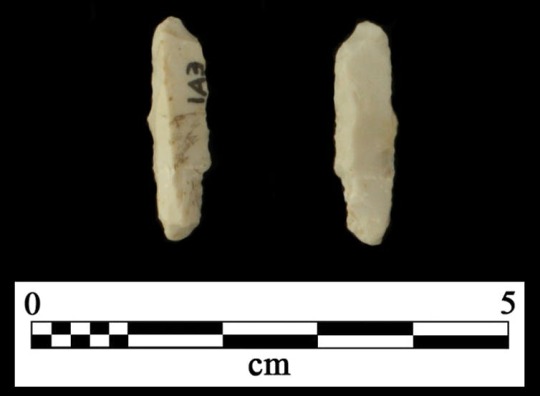
Cahokian emissaries carried distinctive instruments like this Burlington chert drill.
Jayur Mehta, CC BY-ND
As an example, Cahokians could have sought distinctive native information in regards to the emergence of the Solar and Moon from the ocean – celestial alignments had been vital for Cahokians, and this could have been an unobserved phenomenon within the Mississippi River Valley. In alternate, Cahokian emissaries introduced with them a type of rock generally known as Burlington chert, a well-recognized useful resource for making their distinctive tri-lobed projectile factors.
Excavations within the space revealed long-nosed god maskettes product of copper; these artifacts are discovered at solely 20 or so websites throughout the Southeast and Midwest, all of which have a Cahokian presence. These masks could have been a part of a hero narrative that was additionally depicted in rock artwork and narrated by Siouxan talking teams whose conventional lands encompassed a lot of the Higher Midwest.
Farther north, Cahokians created different new, hybridized kinds with native populations.
For instance, throughout Cahokia’s emergence round 1050, close by villages within the uplands of southern Illinois went by way of their very own social transformation; they adopted some facets of early Cahokian tradition whereas retaining cultural and architectural options of their very own.
This may be seen in artifacts discovered on the Halliday website, situated in southern Illinois roughly 30 kilometers southeast of Cahokia; excavations have discovered nonlocal pottery sorts from Indiana and northern Mississippi, Tennessee and Arkansas, alongside pottery typical of Cahokia. Folks at Halliday had been additionally consuming barely completely different meals than at different close by websites, suggesting they maintained culinary traditions of their distant homelands.
Archaeologists have additionally discovered proof that these upland villages ultimately adopted a Cahokian constructing technique that positioned a prefabricated wall immediately right into a trench. But it surely didn’t occur instantly. They caught with putting single posts into the bottom to create constructing partitions for homes from 1050 to 1350, emphasizing villagers’ selection to keep up a few of their pre-Cahokian conventional practices within the face of social change.

Monks Mound at Cahokia is likely one of the largest earthen mounds in North America.
Denise Panyik-Dale/Second Open by way of Getty Pictures
Similarities to in the present day
In every place the place Cahokians remade themselves, they contended with native communities, in addition to their particular person reminiscences of their homeland.
Cahokian migrants made homes that mimicked these at house; they constructed in line with celestial alignments from house; and in diasporic settings, they made iconographic designs honoring mythic heroes from their homeland.
As a result of Cahokians by no means ceased making their homeland wherever they unfold – albeit in distinctive methods in new environments – we imagine it is smart to consider Cahokian and Mississippian tradition not as one monolithic entity with only one perspective, however as a substitute, a large number of voices that collectively signified one thing larger.
The broader anthropological implication of our Cahokian analysis is the reminder it offers throughout the centuries that migration and id are an ongoing course of by which people and communities make and remake themselves, all whereas remembering their homeland and adapting to a brand new one. This course of describes the complexities of residing within the diaspora, and it’s as related in the present day because it was a thousand years in the past.
[The Conversation’s science, health and technology editors pick their favorite stories. Weekly on Wednesdays.]

Jayur Mehta acquired funding from the Mississippi Division of Archives and Historical past for components of this analysis.
from Growth News https://growthnews.in/cahokian-culture-spread-across-eastern-north-america-1000-years-ago-in-an-early-example-of-diaspora/
via https://growthnews.in
0 notes
